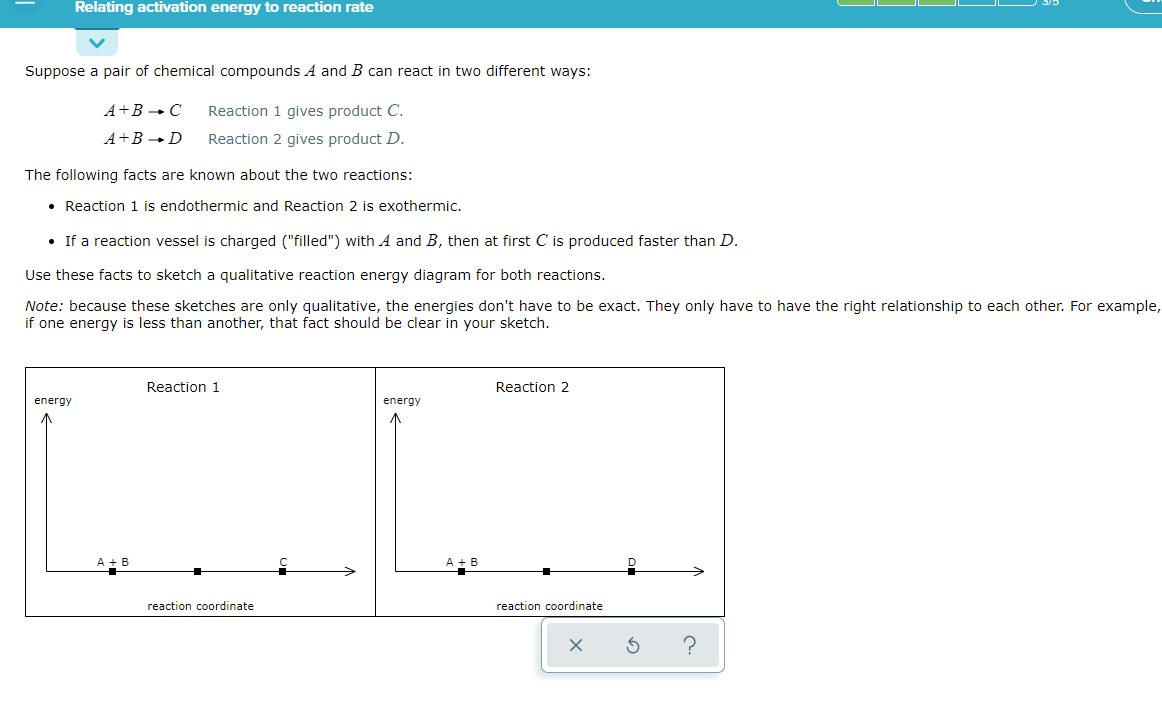Suppose a pair of chemical compounds A and B can react in two different ways: A+B → C Reaction 1 gives product C. A+B →D Reaction 2 gives product D. The following facts are known about the two reactions: • Reaction 1 is endothermic and Reaction 2 is exothermic. • If a reaction vessel is charged ("filled") with A and B, then at first C is produced faster than D. Use these facts to sketch a qualitative reaction energy diagram for both reactions. Note: because these sketches are only qualitative, the energies don't have to be exact. They only have to have the right relationship to each other. For example, if one energy is less than another, that fact should be clear in your sketch. Reaction 1 Reaction 2 energy energy A + B A + B reaction coordinate reaction coordinate
Thermochemistry
Thermochemistry can be considered as a branch of thermodynamics that deals with the connections between warmth, work, and various types of energy, formed because of different synthetic and actual cycles. Thermochemistry describes the energy changes that occur as a result of reactions or chemical changes in a substance.
Exergonic Reaction
The term exergonic is derived from the Greek word in which ‘ergon’ means work and exergonic means ‘work outside’. Exergonic reactions releases work energy. Exergonic reactions are different from exothermic reactions, the one that releases only heat energy during the course of the reaction. So, exothermic reaction is one type of exergonic reaction. Exergonic reaction releases work energy in different forms like heat, light or sound. For example, a glow stick releases light making that an exergonic reaction and not an exothermic reaction since no heat is released. Even endothermic reactions at very high temperature are exergonic.

Trending now
This is a popular solution!
Step by step
Solved in 3 steps with 3 images









